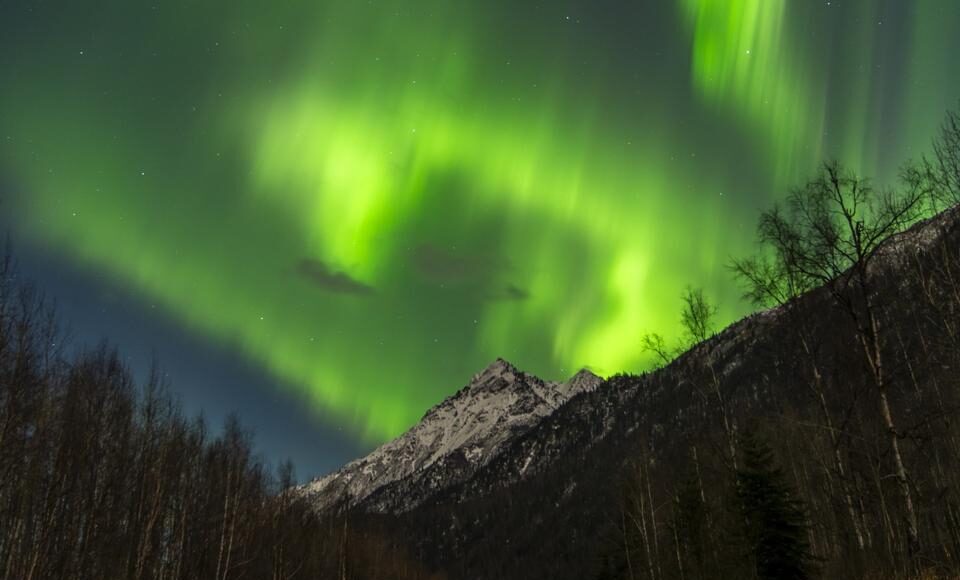Some of the northernmost states may be able to catch a view of the northern lights Tuesday night, according to a National Oceanic and Atmospheric Administration forecast, which projected a mildly strong aurora light show.
Tuesday night’s northern lights forecast is expected to have a Kp index of 3—an indicator of strength measured on a scale from 0 to 9—indicating “more auroral activity” that can be “quite pleasing to look at” from the right vantage point.
No geomagnetic storms, which can produce stronger-than-usual lights, are expected Tuesday or in the coming days, according to NOAA’s forecast.
The lights forecast is expected to weaken later in the week, with the forecast on Thursday only projected to reach a Kp index of 2, according to NOAA’s three-day forecast.
Much of Alaska and Canada will have a chance to view the lights Tuesday night. Other states included within the lights’ “view line,” the southernmost projected point of visibility, include Washington, Idaho, Montana, North Dakota, Minnesota, Wisconsin and Michigan.
The lights are best viewed when it is dark outside at night, typically between 10 p.m. and 2 a.m. local time, NOAA says. The agency also recommends traveling as far north as possible, finding a high vantage point and avoiding light pollution.
National Geographic recommends using a wide-angle lens and a tripod for stability. If using an iPhone, the camera app’s night mode feature can help make the lights pop. NOAA also recommends framing the lights with natural features like mountains, trees or bodies of water.
The northern lights have made frequent appearances in American skies over the past year because solar activity has been especially active. The sun is in its “solar maximum,” scientists say, the period of its 11-year cycle during which solar activity, like flares and geomagnetic storms, are more common. These solar events can produce strong northern lights displays. NASA estimated last year’s northern lights shows hit a 500-year peak, and the agency said these aurora borealis sightings are expected to continue throughout 2025 until the solar maximum period ends. Some recent northern lights forecasts have been especially strong. In late March, about half of the states were included within the NOAA’s projected view line because a strong geomagnetic storm caused the lights to reach a Kp index of about 6.67. In October, a severe geomagnetic storm caused a northern lights forecast so strong the auroras were visible as far south as Florida.
Northern Lights Displays Hit A 500-Year Peak In 2024—Here’s Where You Could Catch Aurora Borealis In 2025 (Forbes)









